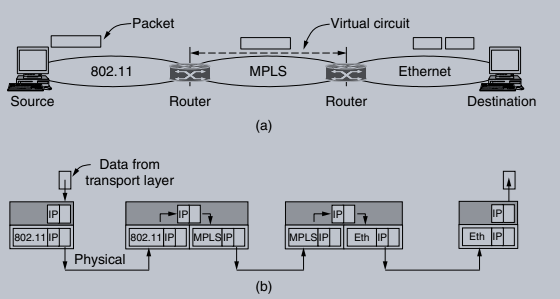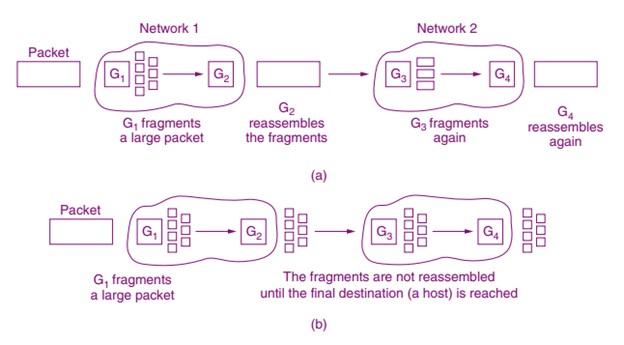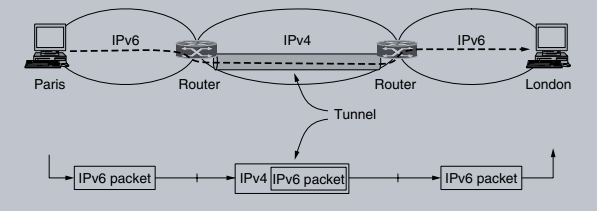Understanding Internetworking
Internetworking is a fundamental concept in computer networking that allows different types of networks to communicate with one another. This process is essential in today’s digital landscape, where various networks—such as Local Area Networks (LANs), Wide Area Networks (WANs), and Personal Area Networks (PANs)—utilize different protocols and technologies. In this article, we will explore the challenges and solutions associated with internetworking, the differences between networks, and the techniques used to connect them effectively.
The Need for Internetworking
Historically, networking was often viewed through the lens of a single, homogeneous network where all devices used the same protocols. However, this assumption is overly simplistic. The reality is that numerous networks exist, each with its own unique characteristics and protocols. For instance, Ethernet, Wi-Fi (802.11), and MPLS (Multiprotocol Label Switching) are just a few examples of the diverse networking technologies in use today.
The Value of Interconnected Networks
Bob Metcalfe famously posited that the value of a network increases exponentially with the number of connections it can support. This means that larger networks, which can connect more devices, are inherently more valuable. As a result, there is a strong incentive to interconnect smaller networks to create larger, more robust networks. The Internet serves as the prime example of this interconnection, allowing users from different networks to communicate seamlessly.

Challenges of Internetworking
When connecting different networks, several challenges arise due to their inherent differences. These challenges include:
1.Heterogeneity: Different networks may use various protocols, addressing schemes, and data formats. For example, an Ethernet network may use a different packet size and addressing scheme than a Wi-Fi network.
2.Addressing: Each network may have its own addressing scheme, which complicates the process of routing packets from one network to another. For instance, how does a device on an Ethernet network address a device on a WiMAX network?
3.Packet Size Limitations: Each network has a maximum packet size (MTU – Maximum Transmission Unit). If a packet exceeds this size, it must be fragmented, which can lead to complications in transmission and reassembly.
4.Quality of Service (QoS): Different networks may offer varying levels of QoS. For example, a network with strong QoS guarantees may struggle to maintain those guarantees when interfacing with a best-effort network.
5.Security and Privacy: Different networks may have different security protocols and privacy rules, complicating the establishment of secure connections.
Challenges of Internetworking
When connecting different networks, several challenges arise due to their inherent differences. These challenges include:
1.Heterogeneity: Different networks may use various protocols, addressing schemes, and data formats. For example, an Ethernet network may use a different packet size and addressing scheme than a Wi-Fi network.
2.Addressing: Each network may have its own addressing scheme, which complicates the process of routing packets from one network to another. For instance, how does a device on an Ethernet network address a device on a WiMAX network?
3.Packet Size Limitations: Each network has a maximum packet size (MTU – Maximum Transmission Unit). If a packet exceeds this size, it must be fragmented, which can lead to complications in transmission and reassembly.
4.Quality of Service (QoS): Different networks may offer varying levels of QoS. For example, a network with strong QoS guarantees may struggle to maintain those guarantees when interfacing with a best-effort network.
5.Security and Privacy: Different networks may have different security protocols and privacy rules, complicating the establishment of secure connections.
Connecting Different Networks
To connect different networks, two primary approaches can be employed:
1.Protocol Translation
This method involves creating devices that can translate packets from one network protocol to another. While this approach can work, it often leads to incomplete translations and can be cumbersome, especially when dealing with fundamentally different protocols.
2.Common Network Layer
A more effective solution is to establish a common network layer that abstracts the differences between networks. This approach was championed by Vint Cerf and Bob Kahn, who proposed the Internet Protocol (IP) as a universal packet format. IP has become the foundation of the modern Internet, allowing diverse networks to communicate effectively.
How Networks Differ
Internetworking requires addressing several key differences between networks, including:
→ Service Type: Networks may be connectionless (like IP) or connection-oriented (like MPLS).
→ Addressing Schemes: Networks may use flat or hierarchical addressing.
→ Broadcasting Capabilities: Some networks support broadcasting, while others do not.
→ Packet Size: Each network has its own maximum packet size, which can complicate transmission.
→ Ordering: Some networks guarantee ordered delivery, while others do not.
→ Quality of Service: Different networks may offer varying levels of QoS.
→ Reliability: Networks may have different levels of packet loss tolerance.
→ Security: Different networks may implement varying security measures.
Internetwork Routing
Routing in an internetwork poses unique challenges compared to routing within a single network. Each network may use different routing algorithms, and operators may have different criteria for determining the best path. To address these challenges, a two-level routing architecture is employed:
1.Intradomain Routing: Each network uses its own interior gateway protocol (IGP) for routing within the network.
2.Interdomain Routing: The Border Gateway Protocol (BGP) is used for routing between different networks (autonomous systems).
This two-level approach allows for flexibility and scalability while maintaining the independence of individual networks.
Internetwork Routing

Packet fragmentation is a common issue in internetworking, as different networks impose different maximum packet sizes. When a packet exceeds the MTU of a network, it must be fragmented into smaller pieces. There are two primary strategies for handling fragmentation:
1.Transparent Fragmentation: In this approach, routers reassemble fragments at the exit router, making the fragmentation process invisible to subsequent networks. This method can lead to increased complexity and overhead, as routers must manage the reassembly of fragments.
2.Nontransparent Fragmentation: Here, fragments are treated as independent packets and are only reassembled at the destination. This approach reduces the workload on routers but requires careful management of fragment order and integrity.
Internetwork Routing
Tunneling is a technique used to encapsulate packets from one network protocol within another protocol, allowing them to traverse incompatible networks. For example, an IPv6 packet can be sent over an IPv4 network by encapsulating it within an IPv4 header. This method creates a “tunnel” through which the original packet can travel without needing to understand the underlying network’s protocol.

Advantages of Tunneling
→ Simplicity: Hosts on either end of the tunnel do not need to be aware of the intermediate network’s protocol.
→ Security: Tunneling can enhance security by encapsulating data, making it more difficult for unauthorized users to access the information.
Disadvantages of Tunneling
→ Limited Reachability: Packets cannot exit the tunnel until they reach the destination, which can limit connectivity with other networks.
→ Overhead: Additional headers are required for encapsulation, which can lead to increased packet size and potential performance issues.
Conclusion
Internetworking is a vital aspect of modern networking, enabling diverse networks to communicate and share resources. While challenges such as heterogeneity, addressing, packet size limitations, and security must be addressed, techniques like protocol translation, common network layers, and tunneling provide effective solutions. Understanding these concepts is essential for network engineers and IT professionals as they design and manage interconnected networks in an increasingly complex digital landscape. By leveraging these strategies, organizations can ensure seamless communication across various network types, ultimately enhancing connectivity and collaboration.
